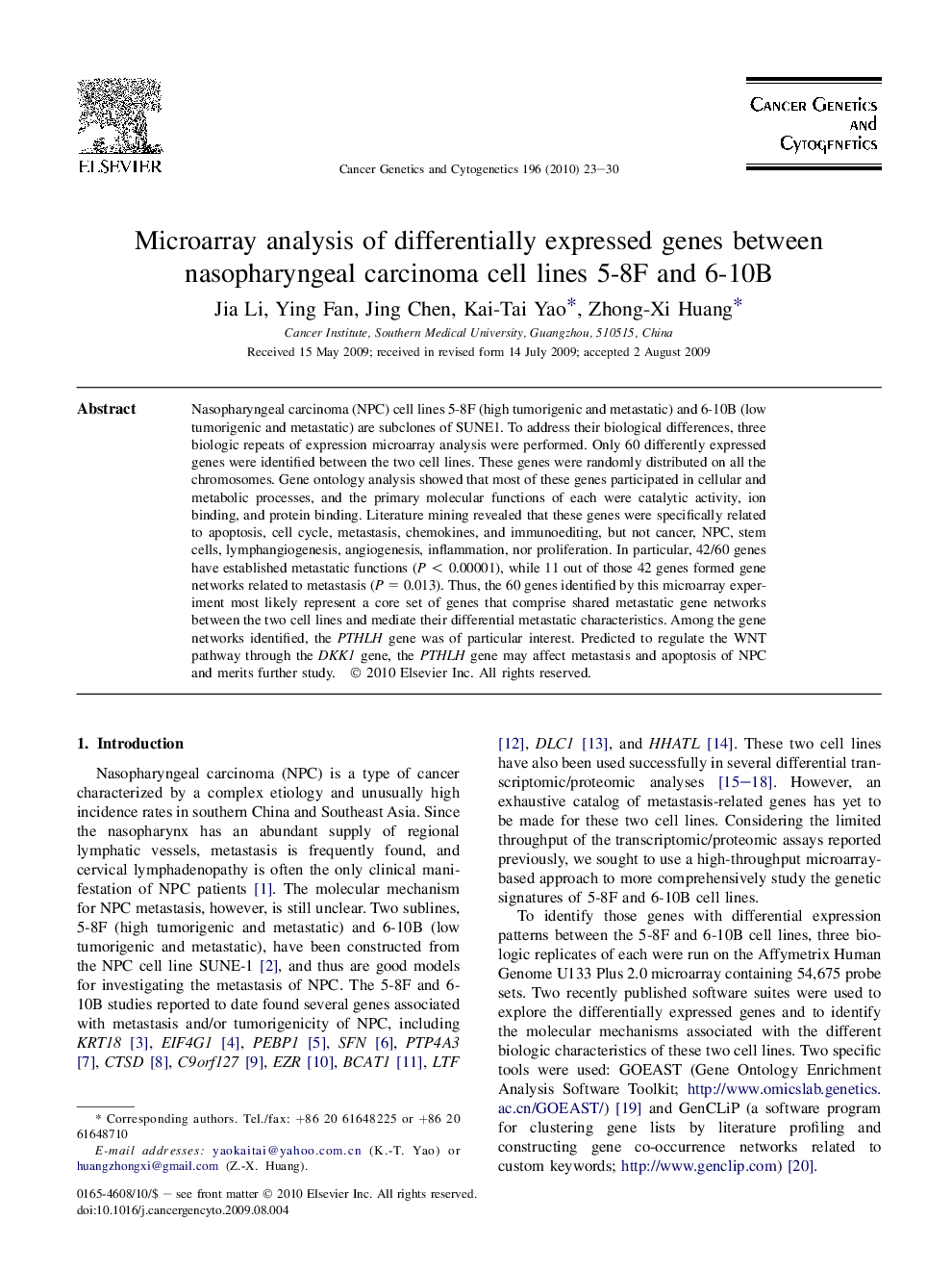| Article ID | Journal | Published Year | Pages | File Type |
|---|---|---|---|---|
| 2110983 | Cancer Genetics and Cytogenetics | 2010 | 13 Pages |
Abstract
Nasopharyngeal carcinoma (NPC) cell lines 5-8F (high tumorigenic and metastatic) and 6-10B (low tumorigenic and metastatic) are subclones of SUNE1. To address their biological differences, three biologic repeats of expression microarray analysis were performed. Only 60 differently expressed genes were identified between the two cell lines. These genes were randomly distributed on all the chromosomes. Gene ontology analysis showed that most of these genes participated in cellular and metabolic processes, and the primary molecular functions of each were catalytic activity, ion binding, and protein binding. Literature mining revealed that these genes were specifically related to apoptosis, cell cycle, metastasis, chemokines, and immunoediting, but not cancer, NPC, stem cells, lymphangiogenesis, angiogenesis, inflammation, nor proliferation. In particular, 42/60 genes have established metastatic functions (P < 0.00001), while 11 out of those 42 genes formed gene networks related to metastasis (P = 0.013). Thus, the 60 genes identified by this microarray experiment most likely represent a core set of genes that comprise shared metastatic gene networks between the two cell lines and mediate their differential metastatic characteristics. Among the gene networks identified, the PTHLH gene was of particular interest. Predicted to regulate the WNT pathway through the DKK1 gene, the PTHLH gene may affect metastasis and apoptosis of NPC and merits further study.
Related Topics
Life Sciences
Biochemistry, Genetics and Molecular Biology
Cancer Research
Authors
Jia Li, Ying Fan, Jing Chen, Kai-Tai Yao, Zhong-Xi Huang,
